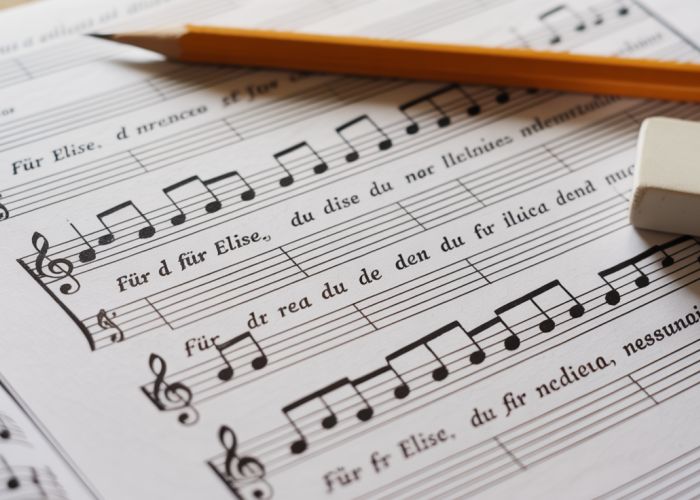Struggling with Fur Elise pronunciation? You’re not the only one captivated by Beethoven’s masterpiece but facing challenges in accurately pronouncing its title. Many find themselves turning to online resources like Forvo for audio guidance on complex pronunciations. This tutorial will help you master the nuances of fur elise pronunciation, ensuring your rendition honors the piece’s beauty and its composer’s legacy. The German language itself presents unique sounds that significantly influence the accuracy of fur elise pronunciation.

Decoding "Für Elise": Your Guide to Perfect Pronunciation
Learning to play Beethoven’s "Für Elise" is a rite of passage for many pianists. But properly pronouncing the title is often a source of confusion. This guide will help you confidently say "Für Elise" with the correct pronunciation.
Understanding the Basics
First, let’s break down the words. The title is German, not English, which explains the initial hesitation.
- "Für" means "for."
- "Elise" is a woman’s name.
Pronouncing "Für"
This is where many people stumble. The "ü" sound doesn’t exist directly in English. Here’s how to approach it:
Visualizing the Sound
Think of saying "ee" as in "see," but round your lips as if you were going to whistle. The sound should be somewhere between "ee" and "oo."
Phonetic Representation
We can represent it phonetically as something like "fyur" (rhymes with "pure"), with a slight emphasis on the "yur" sound.
Common Mistakes to Avoid
- Saying "fur" as in the animal’s coat. This is a completely different sound.
- Ignoring the "ü" altogether and just saying "for."
Pronouncing "Elise"
"Elise" is more straightforward, but a few nuances will help.
Breaking it Down
- E is pronounced like "Eh" as in "egg," but slightly shorter and more open.
- li is pronounced like "lee" as in "glee."
- se is pronounced like "zeh" as in "zebra" with a slightly softer "z" sound, bordering on an "s" in some dialects.
Phonetic Representation
A good phonetic representation would be "Eh-lee-zeh."
Emphasis
The emphasis is usually placed on the second syllable: Eh-LEE-zeh.
Putting it All Together
Now that we’ve tackled each word individually, let’s combine them.
The Complete Pronunciation
"Für Elise" should sound something like: "Fyur Eh-lee-zeh".
Practicing the Flow
Don’t pause awkwardly between the words. Aim for a smooth transition.
Using Audio Resources
The best way to perfect your "für elise pronunciation" is to listen to native German speakers. There are countless audio examples online.
Helpful Resources
Consider using these tools to improve your pronunciation:
- Online Dictionaries: Dictionaries with audio pronunciation features.
- YouTube: Search for "Für Elise pronunciation" to find tutorials.
- Language Learning Apps: Some apps may offer targeted pronunciation exercises.
Common Mispronunciations Table
To make things crystal clear, here’s a table of common mispronunciations and how to correct them:
| Mispronunciation | Why it’s incorrect | Corrected Pronunciation |
|---|---|---|
| "Fur Elise" | Incorrect "für" sound | "Fyur Eh-lee-zeh" |
| "For Elise" | Missing "ü" sound | "Fyur Eh-lee-zeh" |
| "Foo-er Elise" | Overly exaggerated "ü" | "Fyur Eh-lee-zeh" |
By following these guidelines and utilizing the resources provided, you’ll be well on your way to mastering the "fur elise pronunciation."
Fur Elise Pronunciation: Frequently Asked Questions
Still a bit unsure about how to pronounce "Für Elise" correctly? Here are some common questions and their answers to help you nail it!
Is it "Fur Eleez" or "Fur Aleece"?
Neither of those are quite right! The correct fur elise pronunciation is closer to "Fuer Ee-lee-zeh." Focus on the German "ü" sound, which is like saying "ee" with rounded lips.
Why is the "ü" in "Für" so tricky?
The "ü" sound doesn’t exist in English, so it’s a hurdle for many English speakers. It’s a front rounded vowel sound. If you’re having trouble, try saying "ee" and then pushing your lips forward into an "o" shape while maintaining the "ee" sound. This will get you closer to the correct fur elise pronunciation.
Does the German pronunciation really matter?
While many people understand a more anglicized pronunciation, using the correct German pronunciation shows respect for the piece and its composer, Beethoven. Striving for accurate fur elise pronunciation enhances your understanding and appreciation of the music.
Are there different ways to pronounce "Elise" in German?
Not really. In this context, the "E-lee-zeh" pronunciation is standard. The emphasis is on the "lee" syllable. So, when mastering fur elise pronunciation, focus on getting the "Für" right and then the "Elise" becomes quite straightforward.
Alright, go practice your fur elise pronunciation! You’ve got this. And hey, don’t be afraid to hum along while you’re at it!